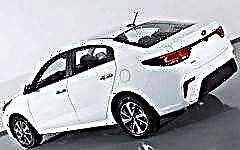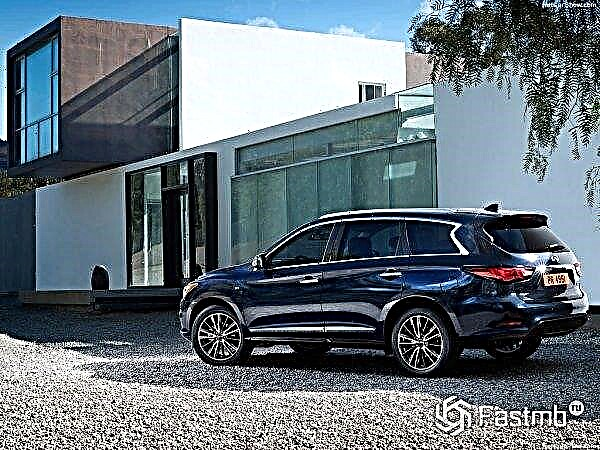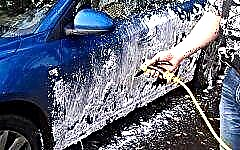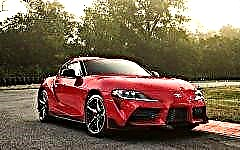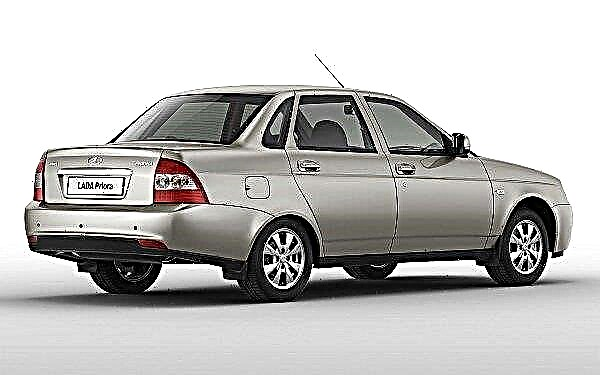
The content of the article:
- Rating of the most expensive cars to maintain in Russia
- Lada priora
- Toyota Avensis
- Hyundai sonata
- Volkswagen passat
- Hyundai accent
- Hyundai getz
- Honda civic
- Mitsubishi lancer
- Toyota Corolla
- Mazda 6
Not every motorist understands that purchasing a vehicle is only the first investment of money. Here you can recall the primordial Russian proverb about a grandmother who did not know worries until she bought a pig.
Minor repairs, major repairs, road accidents, consumables, spare parts, electronic gadgets, scheduled technical inspections - all this translates into a separate item of the family budget. Therefore, even before buying a car, you should attend to the study of the cost of its further maintenance. Models of some automakers should already initially be serviced not in the first one they come across, but in a branded expensive service center. But low-cost cars will not save the day - their repair will be cheaper, but breakdowns will happen much more often.
Even if the car is not used much, is idle for weeks in the garage or in the parking lot, it will still require costs. In order for him to always be in working condition, he must undergo preventive examinations.
A car in Russia can fully be called a luxury, and not a simple means of transportation. This is especially felt in the regions where wages are lower and the cost of car service services is comparable to the capital. What cars are on this list of the most expensive to maintain?
Rating of the most expensive cars to maintain in Russia
1. Lada Priora

The domestic auto industry, as always, got into the anti-rating as very expensive to maintain, the reason for which is high fuel consumption and expensive service. After 90 thousand km, Lada becomes more expensive than any budget foreign car, leading to a monstrous figure of 200 thousand for operation.
The eternal scourge of Russian cars is general corrosion due to poor paintwork. The weak point of the engine is the sensors, which can fail at any level of mileage. The timing belt also serves less than it should be, which has to be changed 2 times more often than the prescribed period.
2. Toyota Avensis

The most popular Japanese cars in the world attract consumers primarily with their reliability. But only when their durable units and parts do break down, their repair in the company service hits the car owner's wallet very painfully. Therefore, it is better to acquire "Japanese" for neat drivers who will take good care of their car, not subject to excessive loads and off-road tests.
The need for frequent inspections makes Toyota very expensive to operate, although you can find a positive side to this - a regular inspection schedule will allow you to identify a malfunction in time.
Thus, if we calculate the annual loss of value, gasoline costs, the CTP policy, five mandatory technical inspections, the fourth of which is the most expensive, and the transport tax, then the output will be about 150 thousand rubles.
3. Hyundai Sonata

The owners of this model speak very positively about their cars, whose systems function well on domestic roads. The main claims relate to the following points:
- build quality, including fender and roof welds;
- unreliability of fastening the washer reservoir and the steering column switch;
- creaks in doorways;
- poor fixation of the gearbox;
- poor quality paintwork.
All these unpleasant nuances are revealed in the first five years of operation, while the warranty is in effect. It is recommended to change oil and filters after 15 thousand kilometers.
Manufacturers claim that Solaris is happy to use 92nd gasoline, although 95th gasoline prolongs the life of the catalyst. To increase the efficiency of operation, the following operations will help:
- Check the wheel alignment angles every six months.
- Each inspection clean and lubricate the brakes, throttle valve, locks, door hinges and terminals, flush the injector.
- Once a year, clean the air conditioning and ventilation system, as well as the radiator cells, and replace the brake fluid.
- Charge the air conditioner with refrigerant before the start of the hot season.
Owning a Hyundai Sonata will cost an average of 130 thousand rubles a year.
4. Volkswagen Passat

Belonging to the ultra-reliable German family guarantees quality and reliability, this is the only way to justify a fairly high operating cost.
There are rarely any complaints about the bodywork, although chrome elements suffer and grow cloudy in winter from reagents and salt that are sprinkled on roads. In some salons, not very careful fitting of parts is noted, which causes squeaks. And film glass heating "gives up" at -10 C, so car owners will have to put up with its slow operation.
Volkswagen Passat cannot be used as a "workhorse": to travel a thousand kilometers on vacation with a full trunk, to carry heavy loads, to drive off-road. This is a car for neat people who take care of their vehicle. Because if it starts to break down, and the owner is not ready to constantly drive it into a branded car service and spend money on original spare parts, the desire to sell it immediately arises.
The service interval is traditionally regulated every 15 thousand kilometers. During the first maintenance, the car will be replaced with oils and filters, which, in the context of Volkswagen, cannot be saved, as well as spark plugs and lighting devices will be checked, and the running and braking systems will be diagnosed. Immediately after purchasing a car, it is advisable to replace the timing belt, although according to the regulations, this procedure should be carried out after 120,000 km. On many models, there is a discrepancy between the odometer readings and the actual mileage.
As a result, the car owner will have to spend at least 125 thousand rubles for operation annually.
5. Hyundai Accent

The maintenance of this car can be compared with Russian small cars, except that Hyundai breaks down much less often. It is better to replace the timing belt in advance, as it rarely withstands more than 60,000 km. In winter, it is necessary to monitor the radiator reservoir, which is quickly destroyed by the influence of chemicals on the road. Short-lived and the corrugation of the intake pipe, operating about 20,000 km, short service life of electronic sensors of idle speed and crankshaft.
Although mostly car owners speak of the car as a budget car, it is the most expensive among all representatives of the C-class - at least 120 thousand per year.
6. Hyundai Getz

This model can be called a highly specialized car - only for moderate city driving. It is ideal for its class - it is convenient, compact, maneuverable, and it is much cheaper to maintain in comparison with Volkswagen or Mercedes.
With the overall reliability of the model with unreasonably frequent use of the clutch, for example, while driving in heavy traffic, the clutch disc will last less than the regulated 80 thousand km. The same situation is with the gearbox, which ideally serves 150-200 thousand km, but in the hands of a reckless driver, the period is halved.
The Koreans have developed a very well thought-out plan of routine maintenance, carried out every 15 thousand km, subject to which the manufacturer promises many years of operation.
The first, the most budgetary inspection includes the traditional replacement of filters, oils and other fluids, checking the suspension and chassis. During the second, it will be the turn of the candles and the check of the brake system with the replacement of the working fluid, although motorists complained that the candles have to be changed after 15 thousand km.The most serious work lies ahead at the fourth inspection, when it is necessary to change the timing belt and tension rollers.
What weaknesses did the owners notice? By 60 thousand km, oil seals begin to leak, and in wet weather the starting system can junk. Most of all complaints about the body, which very quickly succumbs to all scratches and chips.
Thus, in order to maintain the car in proper condition, the owner will have to spend 117 thousand rubles annually.
7. Honda Civic

Despite the vaunted Japanese quality, the car also has characteristic factory flaws. These include squeaks in the clutch pedal on models with a manual transmission, the driver's glass is skewed, and snow blower brushes can freeze in winter at extremely low temperatures. Additionally, it is worth noting a rather high fuel consumption - about 11 liters in the city, the lack of analogues for spare parts and, accordingly, the high cost of original parts.
With active use, maintenance will have to be done more often. For the Honda Civic, it is divided into scheduled and seasonal: the first includes standard cleaning, lubrication and inspection, the second prepares the car for the summer or winter season. During seasonal service, tires are replaced, anti-corrosion treatment of the body, and the presence of antifreeze is checked.
If you eliminate all the "sores" immediately after purchasing a car, close your eyes to the cost of spare parts, then long-term reliability will pay off all minor troubles.
The average cost of maintaining a Honda Civic will be 115 thousand rubles.
8. Mitsubishi Lancer

The Japanese long-liver in the Russian car market invariably enjoys stable demand for moderate reliability and unpretentiousness.
Among the features of operation, the following should be noted:
- due to dirt in the gap between the radiators of the air conditioner and the engine, every 60 thousand km you will have to completely remove and clean the components;
- after 100 thousand km, the contacts at the frontal impact sensors that regulate the release of airbags rot. They cannot be repaired, and therefore require replacement;
- a weak engine forces the owner to squeeze out the gas more actively, which leads to wear and tear of the resource already up to 150 thousand km;
- work in difficult conditions leads to active combustion of the oil, clogging the channels in the pistons and rings, which further finishes the engine.
Therefore, the unpretentiousness of the car still translates into an annual 110 thousand rubles.
9. Toyota Corolla

It stands on the same level as the previous car - the same 110 thousand rubles. She belongs to the representatives of the automotive world, requiring careful personal care. You will have to visit the service every 10 thousand km, but always once a year. If you have run over 50 km, Toyota has the right to withdraw this car from the warranty.
For paintwork and corrosion protection, a warranty period of 3 years or 100 thousand kilometers is established, the battery is given 2 years for a free replacement or a 50% refund upon leaving the working condition in the 3rd year of life.
The main source of unplanned costs for a Toyota Corolla is the small interval between oil changes. Frequent service visits will prove that this model has never been and never will be cheap to maintain.
10. Mazda 6

Compared to Toyota, this car is a gift. With her, you can visit a car service 2 times less often, but you need to follow the timing of regular technical inspections no less strictly. In this case, the company can also refuse to guarantee the re-run.
For components, assemblies and coverage, the warranty is valid for 3 years or 100 thousand km, for the battery and refrigerant - 1 year, but it is not installed on tires at all.
The car itself is not very expensive to maintain, as it rarely breaks anything. Within the framework of regulated inspections, everything you need will be examined and checked. But if you get into an accident, you can be unpleasantly surprised - a fragile bumper, expensive body parts and optics.
With proper care, operation not under excessive loads, it will require about 90 thousand a year, taking into account all fuel and insurance costs.


